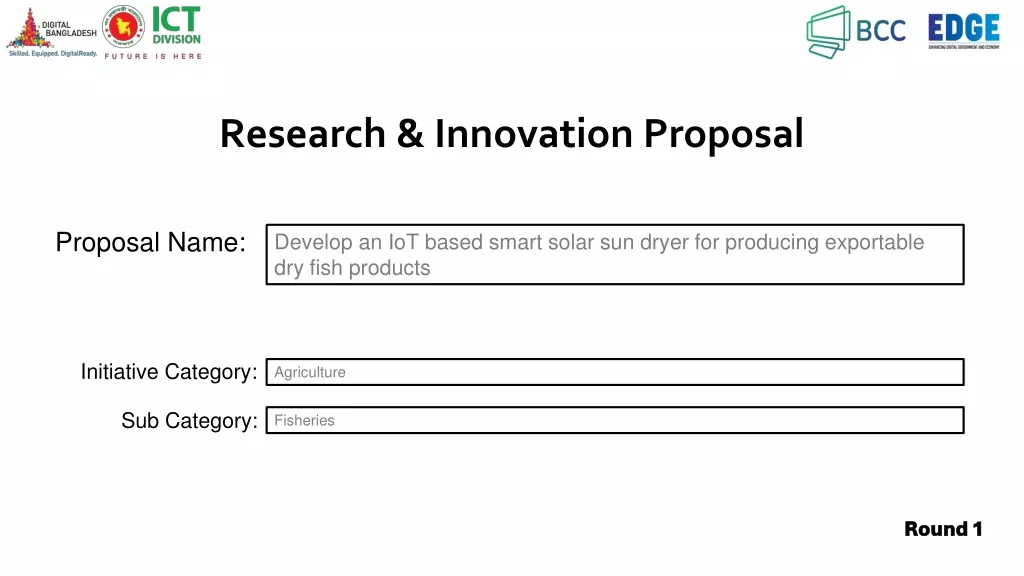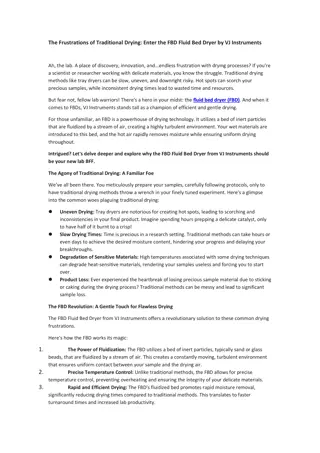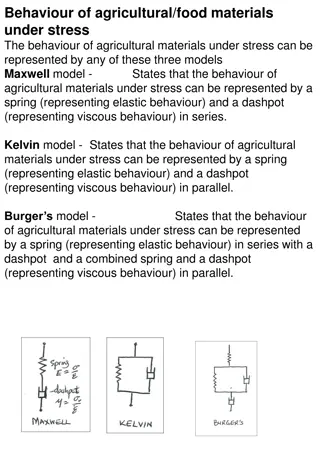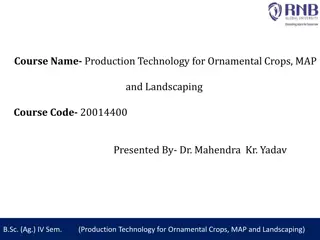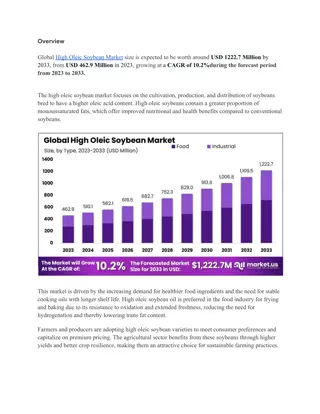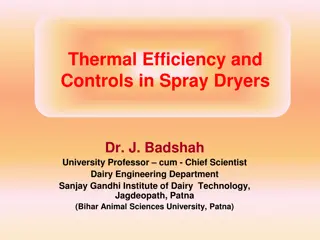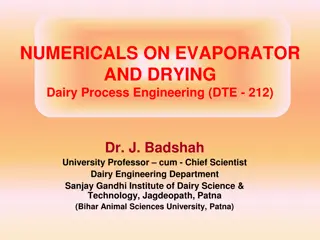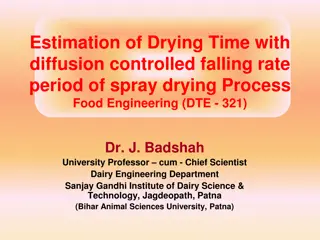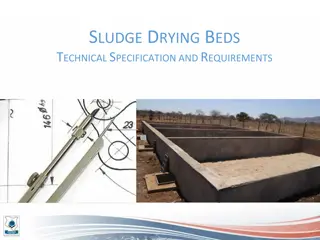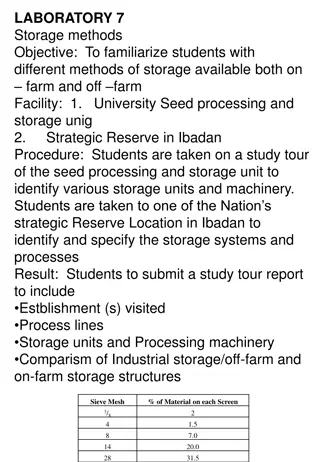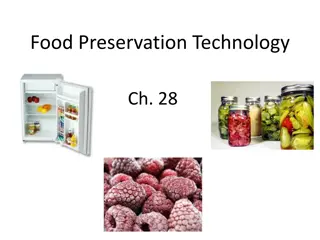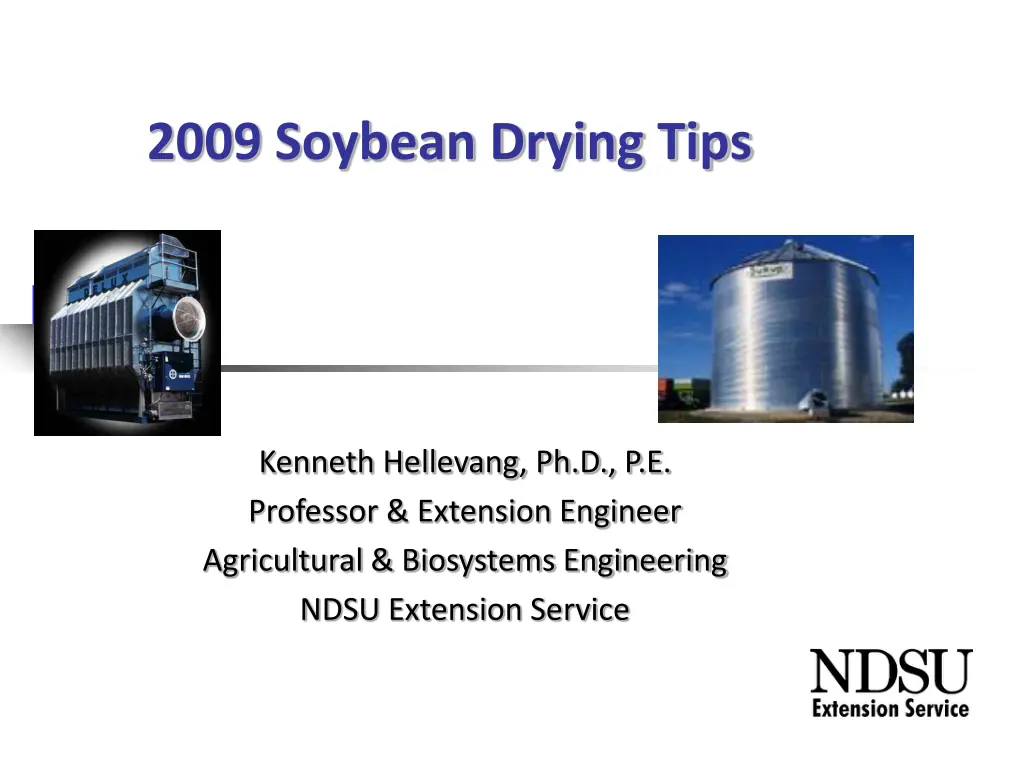
Soybean Drying Tips & Storage Guidelines
Get expert advice on soybean drying techniques, storage moisture contents, allowable storage times for cereal grains, drying time calculations, fan power requirements, and high-temperature drying tips. Ensure optimal conditions for safe soybean storage and maintain quality throughout the process.
Download Presentation

Please find below an Image/Link to download the presentation.
The content on the website is provided AS IS for your information and personal use only. It may not be sold, licensed, or shared on other websites without obtaining consent from the author. If you encounter any issues during the download, it is possible that the publisher has removed the file from their server.
You are allowed to download the files provided on this website for personal or commercial use, subject to the condition that they are used lawfully. All files are the property of their respective owners.
The content on the website is provided AS IS for your information and personal use only. It may not be sold, licensed, or shared on other websites without obtaining consent from the author.
E N D
Presentation Transcript
2009 Soybean Drying Tips Kenneth Hellevang, Ph.D., P.E. Professor & Extension Engineer Agricultural & Biosystems Engineering NDSU Extension Service
Soybeans Average 2004-2008 Week Ending Oct. 11, 2009 Oct. 4, 2009 Oct. 11, 2008 Percent Percent Percent Percent Dropping Leaves 98% 93% 100% 99% Harvested 17% 13% 57% 68% USDA, NASS, ND
Maximum Moisture Contents for Safe Soybean Storage with Aeration Sold by Spring Stored up to 1 year Long-term Storage 14% (13%) 12% 11% EMC @ 70 F & 60% RH Corn Hard Wheat Soybeans 12.8% 13.3% 10.8%
Approximate Allowable Storage Time for Cereal Grains (Days) ----- Grain Temperature ( F) ----- Moisture 30 40 50 60 70 80 Content (%) Approximate Allowable Storage Time (Days) 14 * * * * 200 140 15 * * * 240 125 70 16 * * 230 120 70 40 17 * 280 130 75 45 20 18 * 200 90 50 30 15 19 * 140 70 35 20 10 20 * 90 50 25 14 7 22 190 60 30 15 8 3 24 130 40 15 10 6 2 26 90 35 12 8 5 2 28 70 30 10 7 4 2 30 60 25 5 5 3 1
NA Drying Soybeans October 47 F & 65% RH EMC = 12.0% cfm/bu 1.0 1.5 2.0 1.0 1.5 2.0 Drying Time (days) 58 39 29 50 34 25 18% 16% October 15 November 15 37 F & 70% RH EMC = 13.7% Cfm/bu 2.0 2.0 Drying Time (days) 36 39 18% 16% April 42 F & 71% RH, May 56 F & 63% RH
LT Drying Soybeans October 15 November 15 +5 F 42 F & 58% RH EMC = 11.0% cfm/bu Drying Time (days) 18% 1.0 1.5 2.0 1.0 1.5 2.0 58 39 29 50 34 25 16% April 42 F & 71% RH, May 56 F & 63% RH
Fan Power Required Soybean Depth (ft) Airflow Rate (cfm/bu) 1.0 1.25 1.5 2.0 16 18 20 22 24 --- hp per 1,000 bu --- 0.6 0.8 1.0 1.3 1.6 2.0 3.1 4.0 0.5 0.8 1.2 2.4 1.0 1.6 2.5 5.1 1.2 2.0 3.1 6.3 Limit Depth 42 ft diameter bin, soybean 36 ft deep, 1.5 cfm/bu Fan = 340 hp, static pressure = 21-inches wg. Not feasible!
High Temperature Drying Soybeans Some varieties split worse than others. Initial moisture has no effect on splitting. Avoid recirculating dryers. Maximum Drying Temperature (non-food soybeans) Continuous flow Batch Dryer Seed Relative humidity above 40% reduces cracks. 130 F 110 F 110 F
Damage Occurring to Soybeans as Function of Drying Temperature Drying Temperature ( F) Skins Cracked (%) 10 60 Beans Cracked (%) 5 20 100 130 50 90 20 70 160 80 100 30 - 80
Soybean Seed Coat Damage and Cleavage 80 70 60 50 % Damage 40 Seed Coat Cleavage 30 20 10 0 50% 30% 10% Relative Humidity 20 F Temperature Increase Reduces Relative Humidity to (80% 40%)
For More Information http://www.ag.ndsu.nodak.edu/abeng Google: NDSU Corn Drying

